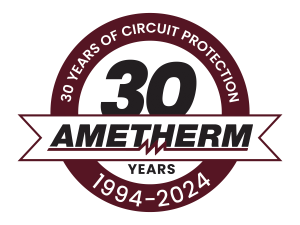Electricity powers our daily lives, and behind the scenes, there’s a crucial factor ensuring the safety and reliability of electrical systems—dielectric strength. In this blog post, we’ll explore the practical importance of dielectric strength, its applications in various domains, and its role in thermistors.
Understanding Dielectric Strength: Essential in Electrical Resilience
Dielectric strength measures a material’s ability to endure electric stress without breaking down. When an electric field is applied, the material’s atoms and molecules may polarize. If the field becomes too intense, it could lead to ionization, creating a conductive path and causing electrical breakdown.

Why It Matters:
- Safety Assurance: Dielectric materials act as insulators in electrical systems, preventing the flow of electric current and reducing the risk of electrical shocks or fires.
- Component Reliability: It is critical for electronic components like capacitors and transformers, ensuring their insulation remains intact and preventing catastrophic failures.
- Power Grid Integrity: Materials with a high dielectric are necessary for power lines and insulators to withstand environmental conditions and the constant stress from the electric field.
Applications of Dielectric Strength: Where Precision is Key
Electrical Insulation:
- Power Cables: Vital for efficient electricity flow in power cables, minimizing risks to people and property.
- Transformers and Capacitors: Dielectric materials in these components contribute to reliable energy storage and management.
High Voltage Equipment:
- Switchgear and Circuit Breakers: Robust dielectric materials are crucial for interrupting high currents safely, protecting electrical systems from overloads or faults.
- Power Distribution: Dielectric strength is essential in designing components for power distribution systems, preventing electrical breakdown and ensuring a stable power supply.
Electronics:
- Printed Circuit Boards (PCBs): Materials with adequate dielectric strength ensure insulation between conductive layers on PCBs, preventing unintended electrical connections.
- Semiconductor Manufacturing: Dielectric materials play a vital role in insulating and protecting delicate components during microelectronics production.
Thermistors:
- Temperature Sensing: Thermistors, which are temperature-sensitive resistors, use dielectric materials to detect temperature changes. Dielectric properties influence their sensitivity and reliability in various applications. This includes temperature monitoring in electronic devices, automotive systems, and industrial processes.
Read About Ametherm’s PANR-103395 With 2000 Volt Dielectric Strength Here!
Challenges and Innovations
Ongoing research in materials science aims to enhance dielectric properties, potentially leading to more efficient and compact electrical systems. Innovations, particularly in nanotechnology, may bring about materials with improved dielectric strength.
Conclusion: Dielectric Strength in Practical Terms
In the realm of electricity, dielectric strength is a practical necessity, ensuring the safety and reliability of our electrical infrastructure. From power grids to electronic devices, the importance of this property cannot be overstated. As technology advances, so too will our understanding of dielectric strength, offering possibilities for safer, more efficient electrical systems. The next time you interact with electrical devices, remember the practical role played by dielectric strength, including its application in thermistors, in ensuring and reliable flow of power.
Ametherm thanks you for taking the time to read our Blog posts. If you have any questions, please contact us, or fill out the form below and we will respond right away.
Visit Our Distributors to See Availability of Our Temperature Sensors and Inrush Current Limiters







